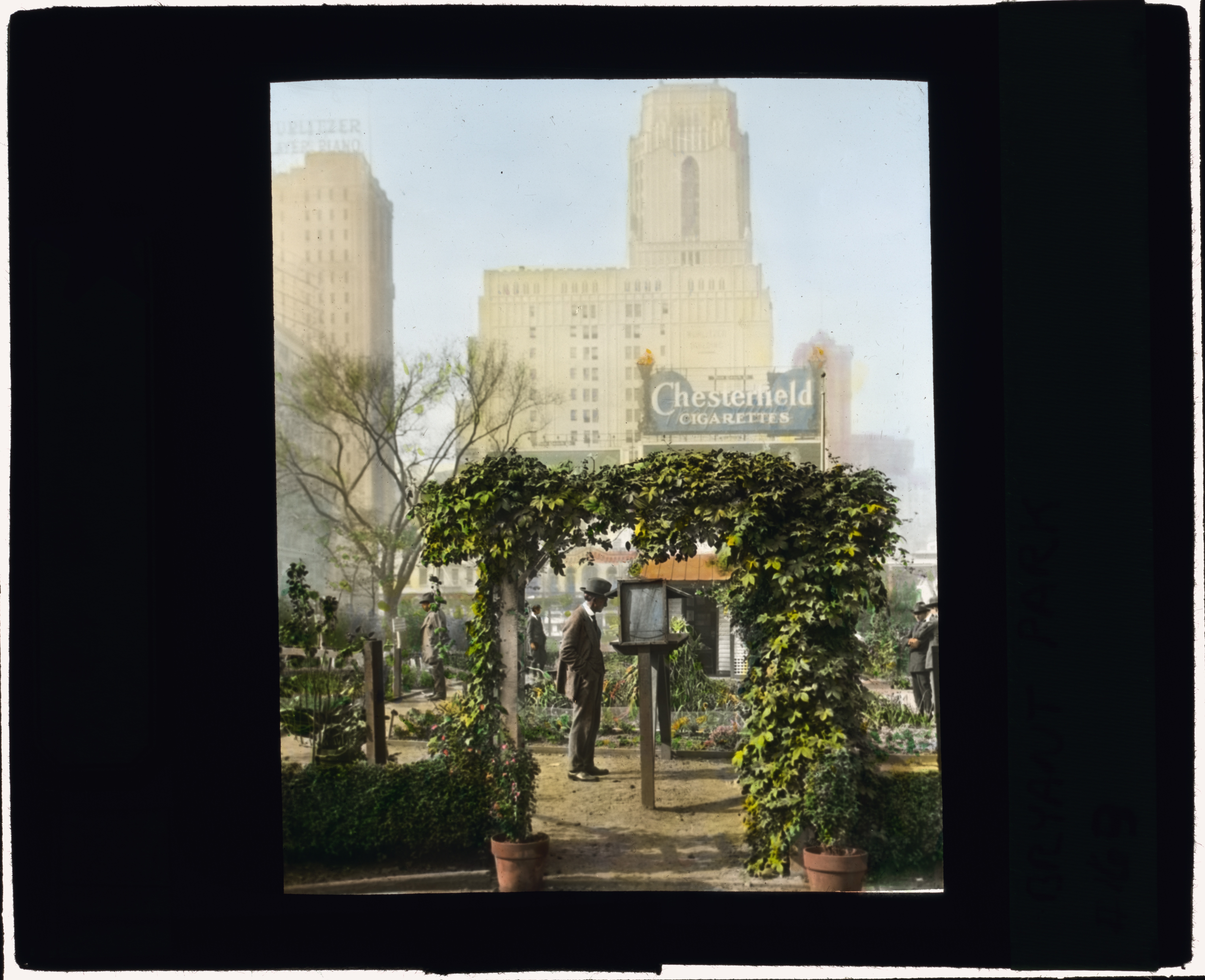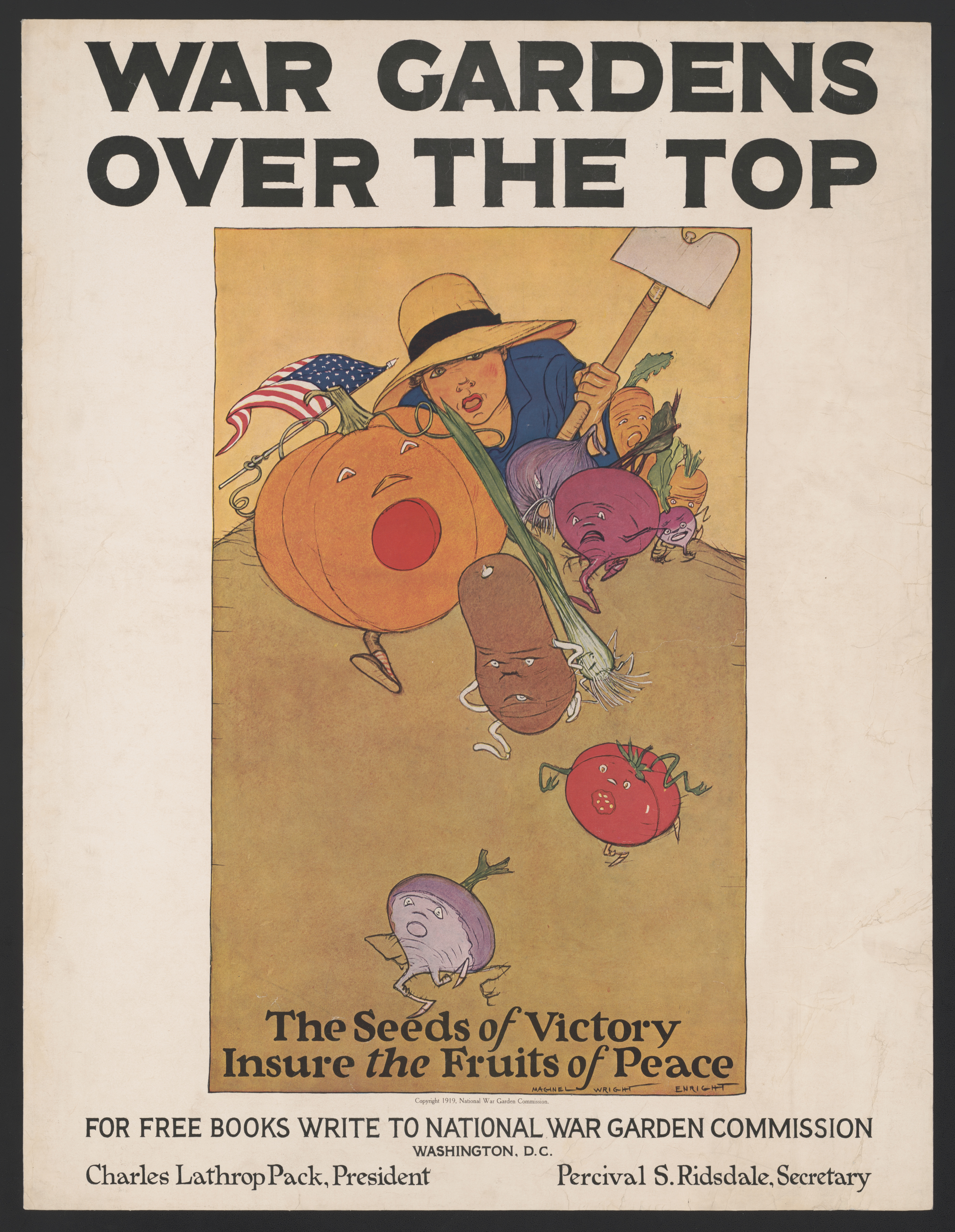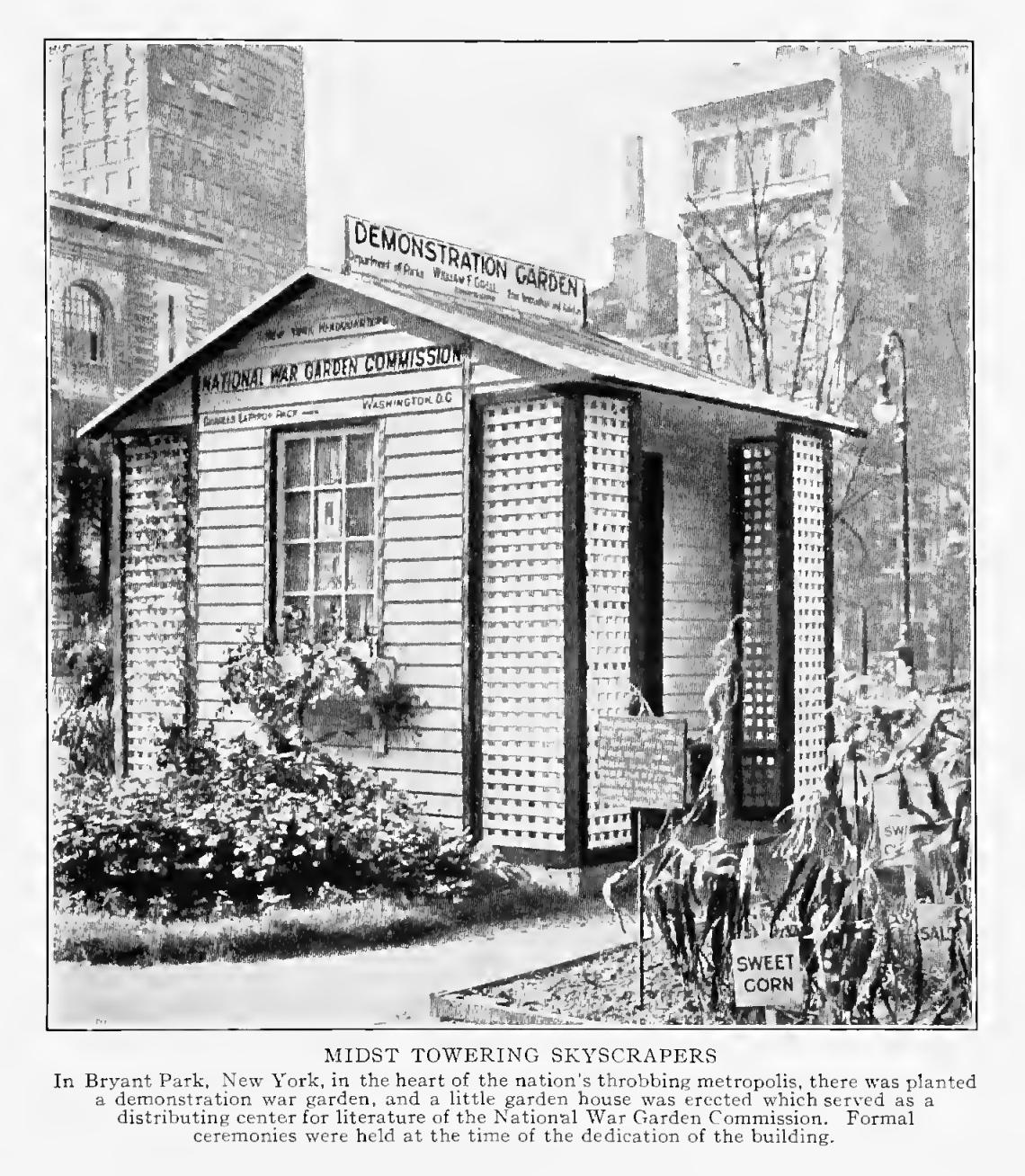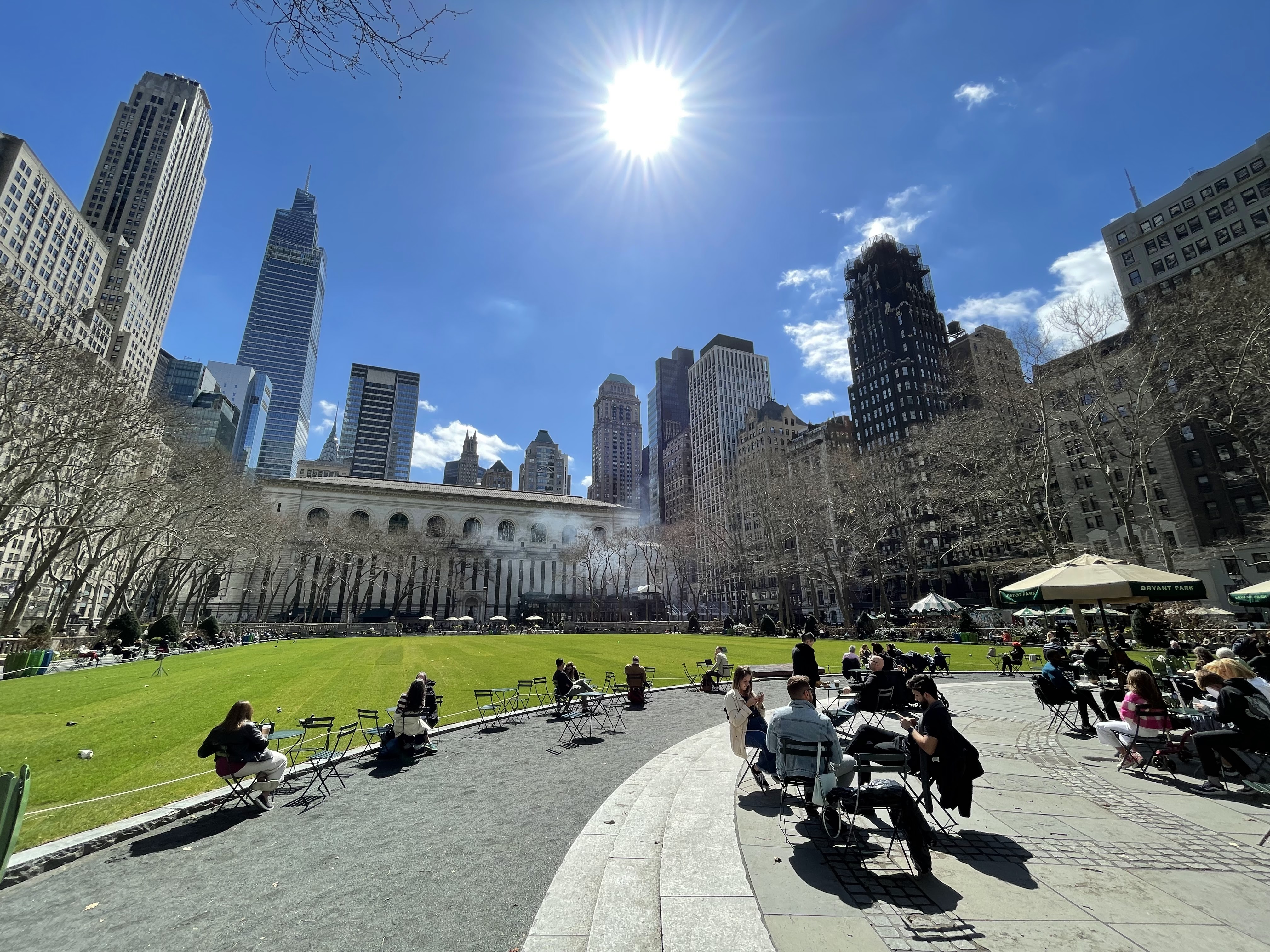
A demonstration garden in Bryant Park sponsored by the National War Garden Commission in 1918 during World War I. Colorized Photo: Frances Benjamin Johnston/Library of Congress
During World War I, the primary motivation for cultivating community gardens in the United States shifted from education to food production. With Europe facing a food shortage, the National War Garden Commission urged citizens to become "soldiers of the soil" by planting "liberty gardens" or "war gardens" to increase exports and meet domestic food needs.
Gardening became a patriotic act, and by 1917 the Commission reported that there were 3.5 million war gardens, producing crops worth 350 million dollars.
The National War Garden Commission campaigned with posters and free books. Photo: Library of Congress
During the war, a demonstration war garden was planted in Bryant Park at W42nd Street and 6th Avenue in spring 1918. The garden was a symbol of victory in the form of vegetable gardening during the war effort from 1914-1918.
A small garden house was built, which served as a distribution center for literature from the National War Garden Commission. A constant stream of visitors recorded their names and addresses in the guest-book at the little garden house. More than 160 loads of manure were delivered to the gardens from the various riding academies near Central Park in the summer of 1918.
"On plaster and ash-filled ground only a few feet above the rumbling subway in New York City was a war garden. From this little vegetable plot in Bryant Park, where land is valued at something like $20,000 a square foot, to the tiny garden along the railroad right of way near the tops of the White Mountains, is a far, far cry. Yet both spots had their war gardens," said Charles Lathrop Pack in his book, The War Garden Victorious, "The one in Bryant Park was a demonstration garden, started solely for educational purposes. Here, representatives of the National War Garden Commission preached the gospel of gardening and freely gave helpful advice and garden primers to passing inquirers. On the other hand, the tiny garden on the cloud-capped slope of the White Mountains was wholly utilitarian."
Bryant Park has continued to be at the center of "green" innovation in the country. Gothamist recently reported that in the late 1970s, journalist and urban planner William H Whyte recommended movable chairs to revitalize Bryant Park. In 1991, Andrew Manshel joined the Bryant Park Restoration Corporation and chose a French green steel-framed folding chair for the park. Despite initial doubts, 2,000 chairs debuted in April 1992, transforming the park and surrounding business district. The popular chairs have since become iconic, influencing public spaces across the country, and symbolizing trust and freedom for park users.
Bryant Park's iconic green chairs in the summertime. Photo: Phil O'Brien
After the war, community gardening projects continued in cities like Detroit, Philadelphia and Baltimore. Black residents often participated in civic horticulture campaigns, holding gardening contests to improve the appearance of their neighborhoods. These initiatives were especially important in neglected areas that had been overlooked by city leaders due to racial prejudice.